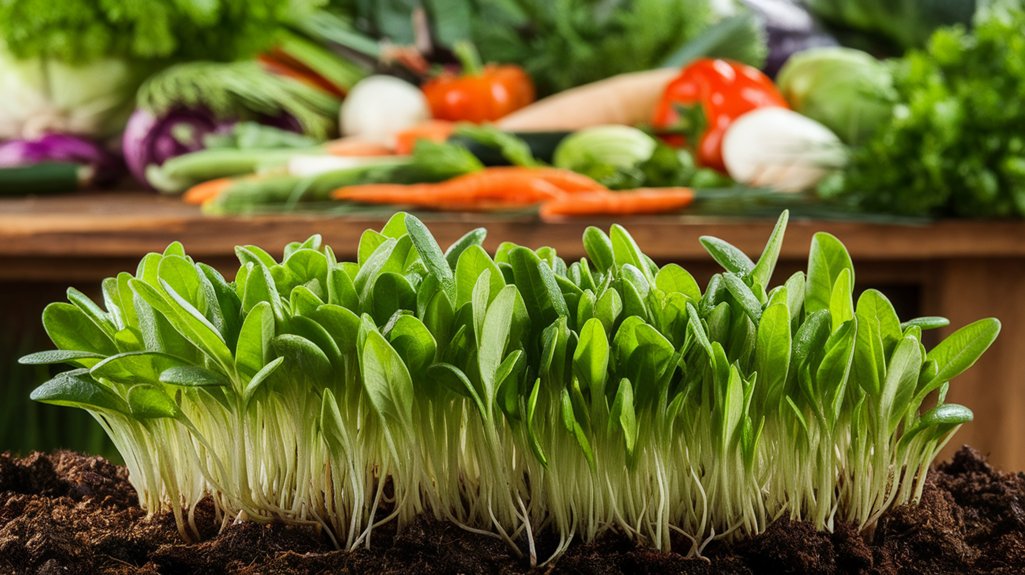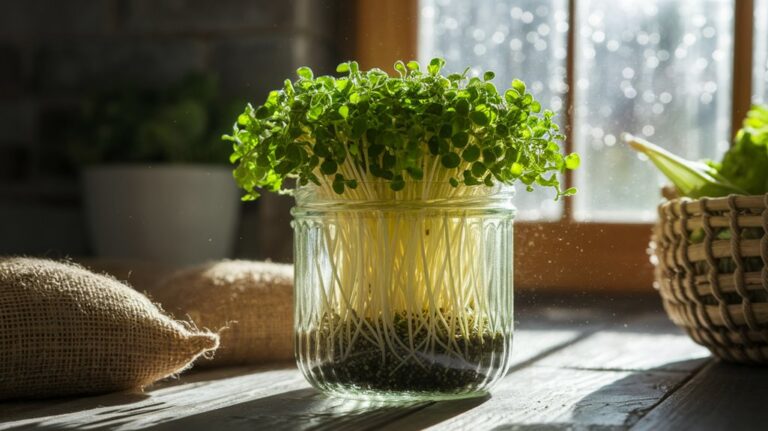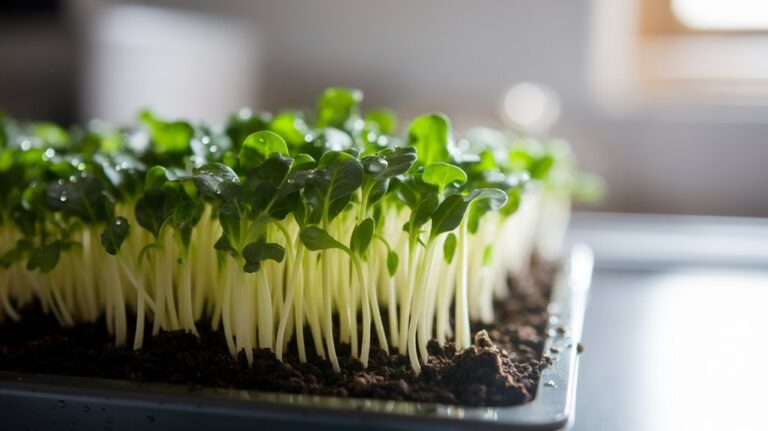Green Sprouts, Great Eats
Eating seasonal produce has transformed my meals and health. Fresh fruits and vegetables, picked at their peak, offer unbeatable flavors and essential nutrients that keep me energized. I love incorporating leafy greens into my dishes—they’re packed with vitamins and boost my immune system. Plus, visiting local farmers’ markets connects me to my community while supporting sustainable practices. There are countless ways to enjoy these green delights in everyday meals, and there’s much more to explore about this vibrant food journey.
Key Takeaways
- Seasonal produce, like greens and sprouts, enhances flavor and nutrients, making meals more vibrant and nutritious.
- Incorporating leafy greens boosts energy and supports digestive health, offering various culinary possibilities.
- Quick recipes, such as veggie stir-fries and smoothies, provide easy ways to enjoy fresh greens and minimize food waste.
- Engaging with local farmers at markets fosters community connections and promotes access to fresh, sustainable produce.
- Embracing regenerative agriculture practices supports biodiversity and contributes to long-term environmental sustainability and healthier food systems.
The Importance of Eating Seasonal Produce
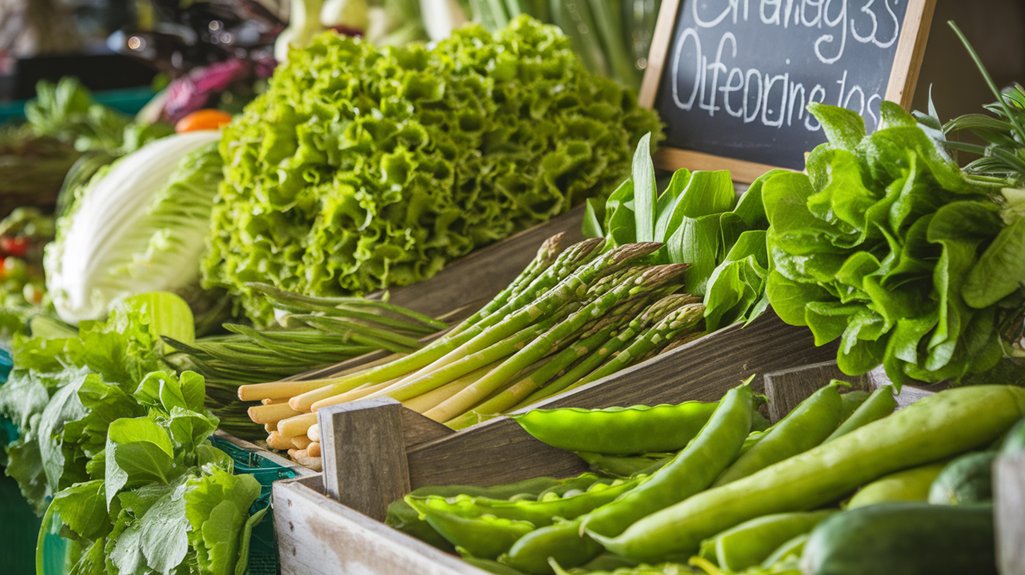
Have you ever wondered why eating seasonal produce feels so much more vibrant and satisfying? I’m convinced it’s because fruits and vegetables harvested at their peak ripeness are bursting with flavor and nutrients.
When I pick up tomatoes in late summer, their sweetness and juiciness are unparalleled. Eating seasonally connects me to nature’s rhythm; I savor the anticipation of winter squash in autumn and the crispness of spring asparagus.
Plus, seasonal produce often comes from local farms, which means fresher options that support my community. It’s a simple yet powerful shift in my diet that transforms my meals.
Whether it’s colorful berries in June or hearty root vegetables in January, each season invites a new culinary adventure that I genuinely relish.
Benefits of Incorporating Greens Into Your Diet
Incorporating greens into my diet has been a game changer for my health.
These vibrant veggies are packed with nutrients that boost my energy and support my immune system, while also promoting better digestion.
Trust me, adding a variety of greens to your meals can truly transform how you feel from the inside out.
Nutrient Density Benefits
When I think about boosting my health, the vibrant greens in my diet stand out as a powerhouse of nutrients. Leafy vegetables like spinach, kale, and Swiss chard are packed with vitamins A, C, and K, as well as essential minerals like iron and calcium.
These nutrient-dense foods offer a low-calorie option that fills me up while providing the energy I need. Incorporating greens into my meals not only enhances flavor but also supercharges my immune system and supports overall well-being.
I love tossing fresh arugula into my salads or blending kale into smoothies, knowing I’m nourishing my body with every bite. Truly, these greens are a simple, delicious way to optimize my health daily.
Improved Digestive Health
Beyond their impressive nutrient density, leafy greens also play a significant role in improving digestive health. I’ve personally experienced the benefits of adding more greens to my meals, and it’s a game changer.
These vibrant vegetables are rich in fiber, which helps keep things moving smoothly through my digestive tract. I’ve noticed that incorporating kale, spinach, and arugula not only helps me feel fuller but also reduces bloating and discomfort.
Plus, the antioxidants found in greens support a healthy gut microbiome, which is vital for overall wellness. Whenever I whip up a salad or blend a green smoothie, I’m not just nourishing my body; I’m actively promoting my digestive health.
Give it a try, and you might just feel the difference!
Simple Recipes to Get You Started
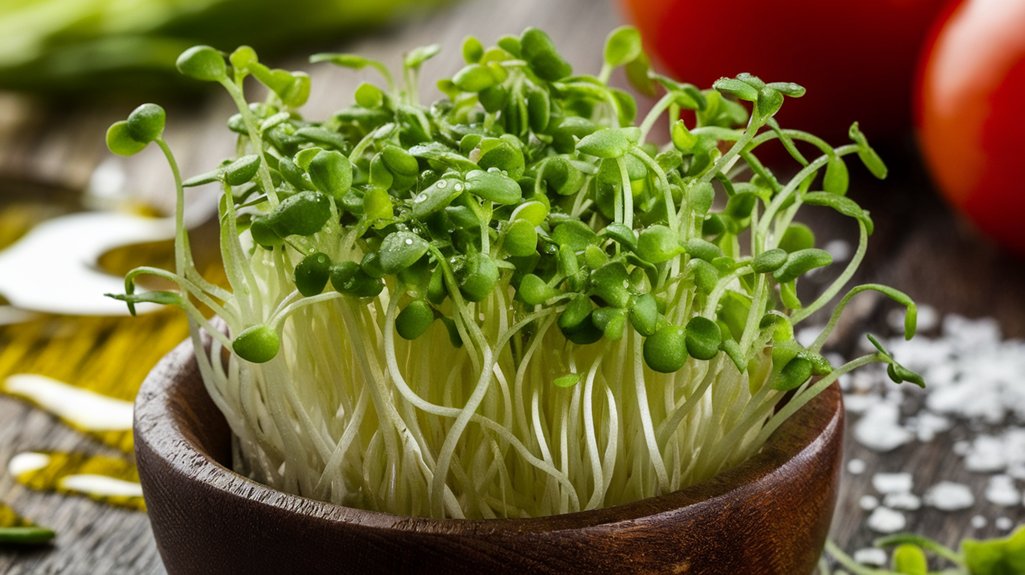
Getting started with greens in your meals can be both fun and easy!
I love whipping up a quick veggie stir-fry, bursting with colors and flavors, or blending a nutritious smoothie that fuels my day.
These simple recipes’ll have you enjoying all the goodness greens offer in no time!
Quick Veggie Stir-Fry
Stir-frying veggies brings a burst of color and flavor to any meal, and it’s one of the quickest ways to enjoy a healthy dish.
I love tossing together my favorite vegetables like bell peppers, broccoli, and snap peas in a hot pan with a splash of olive oil. The sizzle is music to my ears!
In just a few minutes, they’re tender yet crisp, retaining all those vibrant nutrients. I often add a splash of soy sauce or a sprinkle of garlic for an extra kick.
Serve it over brown rice or quinoa, and you’ve got a delicious, nutritious meal in no time.
Trust me, once you try this quick veggie stir-fry, it’ll become a staple in your kitchen!
Nutritious Smoothie Ideas
When it comes to starting my day on a healthy note, I often turn to smoothies that pack a nutritious punch.
They’re quick, delicious, and easy to customize. Here are three of my go-to recipes that never disappoint:
- Green Powerhouse: Spinach, banana, almond milk, and a scoop of protein powder for energy.
- Berry Blast: Mixed berries, Greek yogurt, honey, and a splash of orange juice for a tangy twist.
- Tropical Delight: Pineapple, mango, coconut water, and a hint of ginger for a refreshing pick-me-up.
With these simple recipes, I feel energized and ready to tackle whatever the day throws my way.
Smoothies are my secret weapon for a nutritious start!
Creative Ways to Use Leftovers
Although leftovers can sometimes feel like a chore to repurpose, I’ve discovered that they’re a treasure trove of culinary creativity just waiting to be unleashed. Here are some simple yet delicious ways to transform those remnants into new meals:
| Leftover Item | Creative Use | New Dish Idea |
|---|---|---|
| Roasted Vegetables | Add to a frittata | Veggie-packed frittata |
| Cooked Grains | Stir into soups | Hearty grain soup |
| Grilled Chicken | Toss in a salad | Chicken Caesar salad |
Tips for Shopping at Local Farmers’ Markets
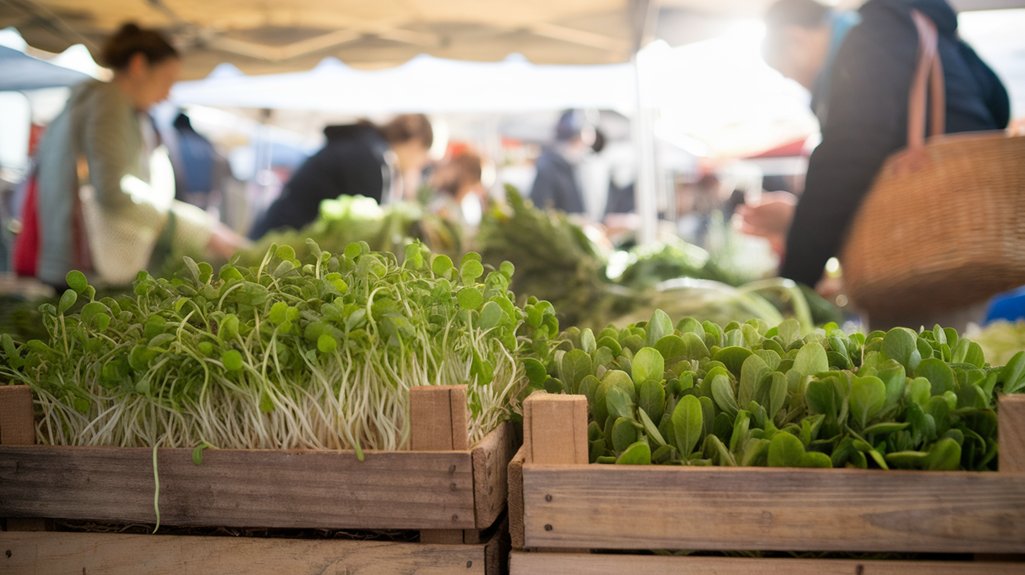
Repurposing leftovers sparks creativity in the kitchen, but nothing compares to the excitement of shopping at local farmers’ markets. The vibrant colors and fresh scents draw me in, making each visit an adventure.
Here are a few tips I’ve picked up along the way:
- Go early for the best selections: Arriving early means you’ll snag the freshest produce and unique finds.
- Talk to the farmers: Engaging with them gives me insight into their growing practices and seasonal recommendations.
- Bring reusable bags: Not only is it eco-friendly, but it also helps me carry all those delicious goodies home.
Shopping at farmers’ markets is more than just picking up groceries; it’s about supporting local communities and enjoying seasonal flavors.
Meal Prep Ideas for Busy Lifestyles
As life gets busier, I’ve found that meal prepping can be a game changer for maintaining a healthy diet without the stress of daily cooking.
I start by choosing a few recipes that excite me, often focusing on seasonal veggies from the farmers’ market. On Sundays, I dedicate a couple of hours to chop, roast, and portion out meals into containers.
Dishes like quinoa bowls and stir-fried veggies work well—just grab them on busy weekdays! I also love having snacks prepped; hummus and chopped veggies or homemade energy balls keep me fueled.
With everything ready to go, I can enjoy nutritious meals without the last-minute scramble. Trust me, it’s a huge relief to have meals prepped in advance!
Sustainable Eating Practices
When I think about sustainable eating practices, I realize how small changes can make a big impact on both my health and the environment.
By being mindful of what I eat, I not only nourish my body, but I also contribute to a healthier planet.
Here are a few simple practices I’ve adopted:
- Buy local: Supporting local farmers reduces transportation emissions and promotes fresh, seasonal produce.
- Opt for plant-based meals: Incorporating more vegetarian dishes lowers my carbon footprint and enhances my diet with diverse nutrients.
- Reduce food waste: Planning meals and using leftovers creatively helps me minimize waste and save money.
These practices remind me that every bite counts, and they empower me to make choices that align with my values.
Inspiring Stories From the Green Food Movement
While exploring the green food movement, I’ve discovered some truly inspiring stories that highlight the transformative power of sustainable practices.
One that stood out to me was a community garden initiative in my neighborhood. Residents, once strangers, united to cultivate fresh produce while learning about permaculture. Their collective effort not only improved local food access but also fostered friendships and a sense of belonging.
Another remarkable tale is of a small-scale farmer who adopted regenerative agriculture, reversing soil degradation and significantly increasing biodiversity on his land.
These stories remind me that every small action counts. By embracing sustainability, we’re not just nourishing ourselves; we’re nurturing our communities and the planet, creating a brighter future for generations to come.
Frequently Asked Questions
What Are the Best Greens for Smoothies?
When it comes to the best greens for smoothies, I swear by spinach and kale. Spinach blends smoothly and adds a mild flavor, while kale packs a nutritious punch with its hearty texture.
I also love throwing in some Swiss chard for its unique taste. If you’re feeling adventurous, try adding arugula for a peppery kick.
These greens not only boost the nutritional value but also make my smoothies vibrant and delicious!
How Can I Store Fresh Greens for Longer?
When I want to store fresh greens for longer, I wash and dry them thoroughly first.
Then, I wrap them in a damp paper towel and place them in a breathable bag or container.
I keep them in the fridge’s crisper drawer to maintain optimal humidity.
This method keeps my greens crisp and vibrant for days.
If I notice any wilting, I just trim the ends and refresh their water!
Are There Any Allergic Reactions to Common Greens?
Absolutely, there can be allergic reactions to common greens.
I’ve seen individuals react to foods like spinach, kale, or lettuce. Symptoms can range from mild itching and hives to more severe reactions like difficulty breathing.
I always recommend paying attention to how your body responds after eating these greens. If you notice any unusual symptoms, it’s best to consult a healthcare professional for advice tailored to your specific situation.
Stay safe and informed!
Can I Grow Greens in Small Spaces?
Absolutely, you can grow greens in small spaces!
I’ve had great success using containers on my balcony and windowsills. Greens like spinach, lettuce, and kale thrive in pots and don’t need much room.
I’ve even used vertical planters to maximize my space. Just make sure they get enough sunlight and you keep the soil moist.
It’s rewarding to harvest fresh greens right from my own little garden, even in a tight spot!
What Are the Signs of Spoiled Greens?
When I check my greens, I look for a few telltale signs of spoilage. If they’re wilting, turning brown, or developing a slimy texture, I know it’s time to toss them.
An off smell can also signal that they’ve gone bad. I always trust my instincts; if something feels or looks off, I don’t hesitate to discard it.
Fresh greens should be vibrant and crisp, so I keep an eye out for those vital signs!
Conclusion
As I wrap up this journey through the vibrant world of seasonal produce, I hope you feel inspired to embrace greens in your meals. By incorporating fresh, local ingredients, you’re not just nourishing your body; you’re also supporting sustainable practices and your community. So, let’s celebrate the deliciousness of nature’s bounty and get creative in the kitchen. Together, we can make every meal a joyful experience, filled with flavor and health. Happy cooking!

